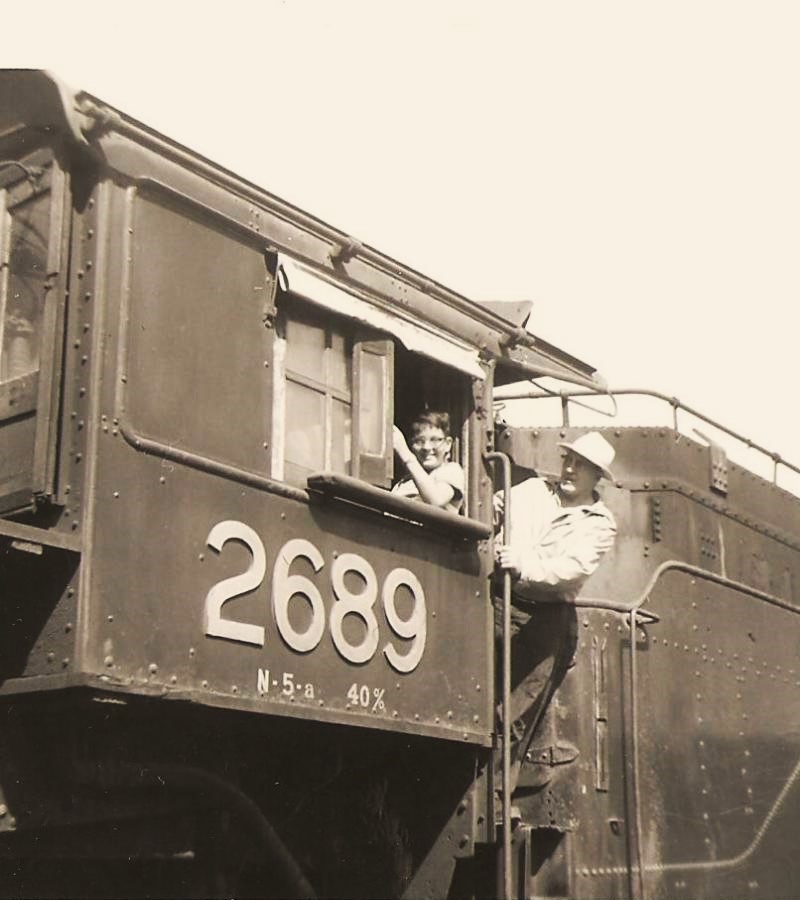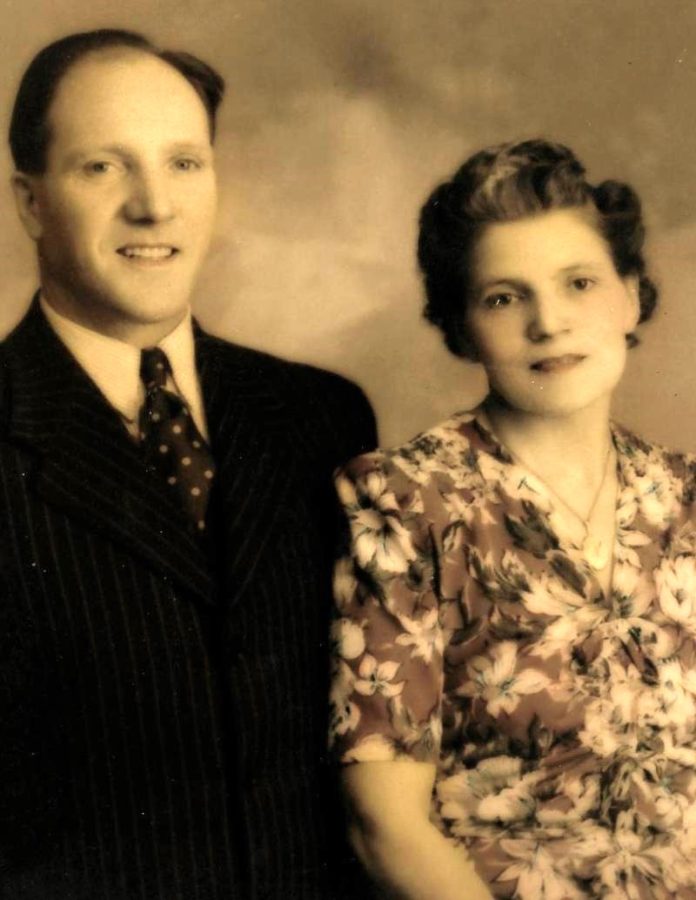This is the 20th in a series of columns about the 70 British Home Children sent to St. Patrick’s Catholic Orphanage in Prince Albert between 1901 and 1907. While all orphanage records were destroyed in the terrible fire of 1947, every attempt has been made to trace the life stories of these dispossessed children through genealogy websites and newspaper databases.
The Mahoneys: Two Soldiers and a Nun
Henry, Catherine, and John Mahoney were all born in the notorious slums of East End of London, England in the late 1900s. They lived in a part of Bermondsey along the Thames River called St. Saviour’s Dock, also known as Jacob’s Island. Charles Dickens provides a vivid description of what it was like in his novel Oliver Twist (1837-1839):
“[C]razy wooden galleries common to the backs of half a dozen houses, with holes from which to look upon the slime beneath; windows, broken and patched, with poles thrust out, on which to dry the linen that is never there; rooms so small, so filthy, so confined, that the air would seem to be too tainted even for the dirt and squalor which they shelter; wooden chambers thrusting themselves out above the mud and threatening to fall into it—as some have done; dirt-besmeared walls and decaying foundations, every repulsive lineament of poverty, every loathsome indication of filth, rot, and garbage: all these ornament the banks of Jacob’s Island.”
Henry James (Jim) Mahoney (1892-1978) was born on 17 Feb 1892 in Bermondsey which was known for its tanneries and leather trade. In his Dictionary of London (1879) Dickens states that the neighbourhood air “reeks with evil smells [from the] huge piles of fresh hides and sheep-skins.” His sister Katherine was born about 1895 and his brother John (Jack) Thomas Mahoney was born in January 1898. I have found no information about the children’s parents other than that their mother’s name was Kate.
On October 11, 1902, all three Mahoney children were admitted to the Newington Workhouse, Southwark Union (formerly St. Saviour), London. A few years earlier, in 1896, future silent movie star Charlie Chaplin, age 7, was an inmate of the same workhouse along with his mother and brother Sydney. In 1902, the institution housed 1,240 inmates. [Source: Peter Higginbotham, Workhouses of London and the South East (2019), pp. 98-99]
In mid-November 1902, the Mahoneys were discharged from the workhouse and sent to Catholic orphanages in Orpington: St. Joseph’s Orphanage for the boys and St. Anne’s Orphanage for Katherine. There, preparations were begun to send the three to Canada. Part of this preparation involved appearing in police court at Bromley. On 25 Apr 1903, the following story appeared in the Bromley and West Kent Telegraph: “To Emigrate to Canada: Thirty boys, now housed at St. Joseph’s Orphanage, Orpington, were brought before the Bench in order to get the usual magisterial sanction to their emigration to Canada. They all expressed their willingness to go, and the Bench assented.” Henry (Jim, age 10) and John (Jack, age 6) would have been in this group of 30 young boys, whose hearing was sandwiched between cases of assault, cruelty, and disorderly conduct.
On 7 May 1903, Henry, Katherine, and John embarked from Liverpool aboard the Tunisian. They arrived in Quebec on 15 May and from there headed West to their new home in St. Patrick’s Catholic Orphanage in Prince Albert, Saskatchewan. Once they completed Grade 8, Jim and Jack likely worked on the orphanage farm near White Star under the supervision of Brother Edouard Courbis, OMI, while Katherine studied at Sion Academy and was soon recruited by the Sisters of Charity to join St. Vincent’s Convent in St. John, New Brunswick.
Both of the Mahoney boys enlisted in the Canadian Expeditionary Force during the First World War, Jack on 8 December 1914 and Jim on 9 January 1915. Upon enlistment, both brothers were assigned to the 52nd Regiment but both were later assigned to the 5th Battalion. Curiously, despite their enlistment dates being a month apart, their regiment numbers were 440558 and 440559, respectively.
When he enlisted, Jim gave his occupation as farmer. He listed his sister Katherine, who was now living at the Convent in St. John, as his next of kin. Jim was wounded twice while fighting in France in 1916: once in April by a shell wound to the head at Boulogne and once by a gunshot to his thigh at the Somme on 20 September, after which he sent to hospital in Woolwich, England. Jim was discharged on 21 May 1919 and moved to Prince Albert where he worked as a railway employee for the CNR (then the Grand Trunk Railway). He was married until about 1950 but I don’t know the name of his wife. He died in Prince Albert in 1978 at age 86.
Jack was only 16 years old when he enlisted. “On his attestation papers he gave his birth date as two years earlier than it actually was, thereby making it appear that he was eighteen years old,” his great-granddaughter Heather Baresich told me in an email on 24 January. “He served as a trench runner, taking messages from one battalion to another by running through trenches and battlefields, on the front lines in France. He was chosen for this because he was strong and fast.” Apparently, as a young man, Jack used to dive off the railway bridge in Prince Albert and swim the North Saskatchewan River.
Some of you may have seen the movie called 1917, which tells the story of two British trench runners in a race to deliver a message behind enemy lines. This is what Jack did. Running the gauntlet through mud-filled battlefields was a crucial but highly dangerous job. Trench runners had to be nimble and physically fit; they needed a great deal of stamina; they needed skill in reading maps; and they needed courage. “The risk to a runner’s life was so great that messages were often sent with two or three carriers on different routes to ensure at least one reached its destination,” Jobe Close writes in a blog for Oxford Home Schooling called “1917: The Runners of the First World War”. “As one veteran described the job, ‘it was merely a question of how long he would last before being wounded or killed’.” Interesting fact: Adolf Hitler was a trench runner for the Germans during WWI.
Jack Mahoney’s grandson Robert (Bob) Malcolmson sent me his recollections about his grandfather. Jack was wounded several times during the Great War, including gunshot wounds to his back and left shoulder in 1916. “He talked about running along the railway tracks at night keeping low as he was silhouetted and a target for snipers,” Bob told me. “He said you couldn’t run anywhere else as it was all mud and you could drown. He talked about lying in the trenches in water and rolling over to keep warm and feel the lice move across his body.”

Jack told his grandson that when he was shot in the shoulder, he didn’t realize it at first. “When he got back to base they examined him and shipped him off to hospital then back to England for six months to mend before sending them back to the front,” Bob recalls. “He was given 14 days leave just prior to the return to the front.” Jack did not mention looking for his mother while in England. “I would doubt that he ever looked for her,” Bob says of his grandfather.
Bob was initially surprised to learn from me that his grandfather had a brother and sister. Jack never talked about them. The Mahoney brothers may have become estranged, for both worked for the CNR and lived in Prince Albert until the ends of their lives. Perhaps their falling out was over money. In 1937, Jack met his future wife Jean Thomas, a widow with two daughters who worked as a cook at Victoria Hospital in Prince Albert. In reviewing his grandparent’s reminiscences, Bob came across this quote from Jean. She said that before they got married, “Jack was living with his brother and his sister-in-law and it was a good idea as he (his brother) was spending all his (Jack’s) money.”
Jack and Jean Mahoney married on 3 May 1937, three months after they met. They lived at 41 28th Street East in PA on land Bob thinks was granted to his grandfather for his war service through the Soldier Land Settlement Act. (I have not yet verified this.) The couple bought a cottage at Murray Point on Emma Lake. During the 1960s, Bob spent his summers at their cottage. His grandmother Jean spent her weeks in town baking pies, buns, donuts, and butter tarts which Jack would pack up and sell to several stores around the lake.
Jack retired from the railway in 1962 and afterwards worked as a caretaker for various institutions, St. Paul’s Anglican Church being the last. He died of cancer at age 84 in 1982. He is buried in South Hill Cemetery in Prince Albert.
Unfortunately, I have not yet uncovered any information about Katherine Mahoney, other than that she was living at St. Vincent’s Convent, St. John, New Brunswick during years of the First World War.
Thanks to Heather Baresich and Robert (Bob) Malcolmson for their assistance in he preparation of this article.


